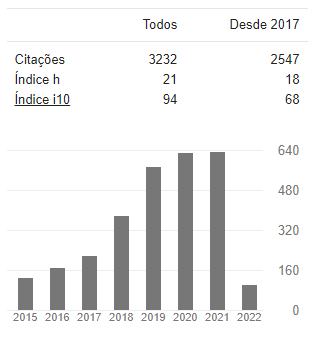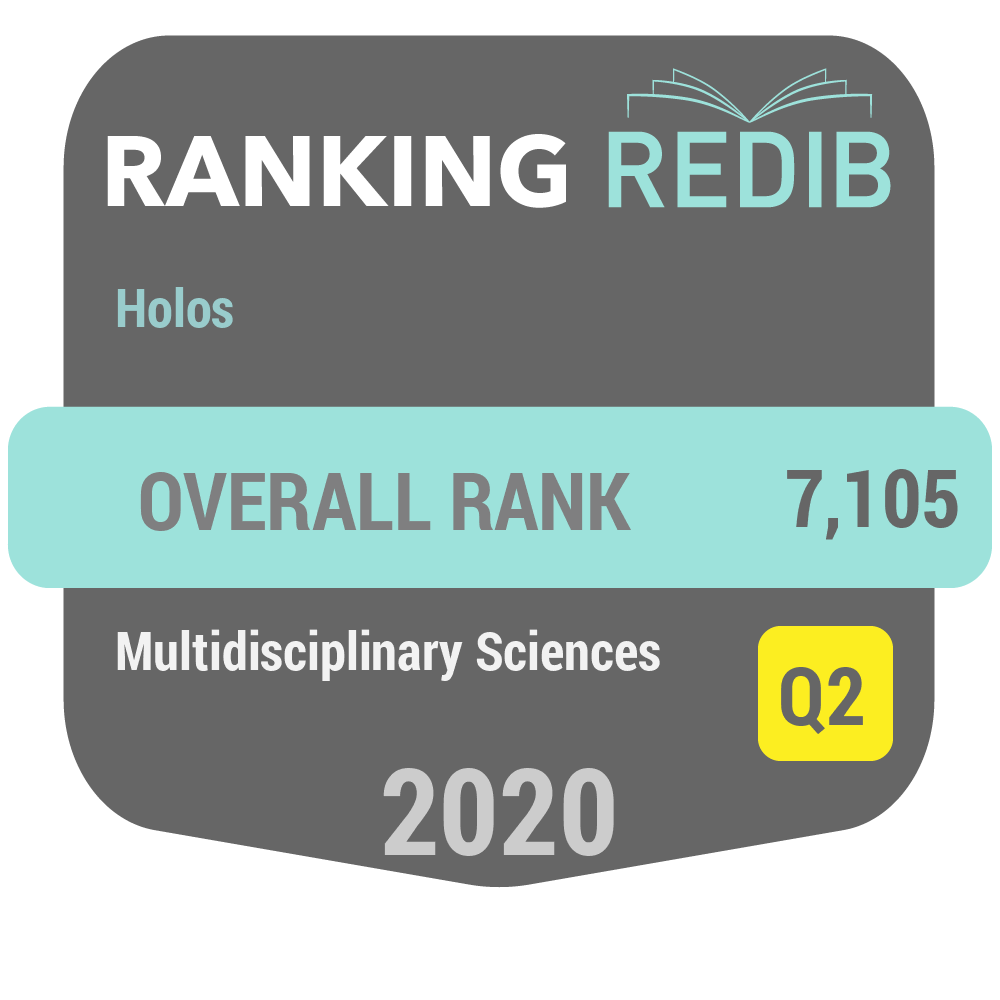Análise e Redesenho dos processos na Cadeia Logística de suprimento de calcário como Insumo.
DOI:
https://doi.org/10.15628/holos.2020.8098Palavras-chave:
Business Process Management (BPM), Business Process Modeling and Notation (BPMN), Gestão de Operações e Logística, calcário.Resumo
O objetivo deste artigo é através de indicadores, verificar os ganhos obtidos com a implementação de modelagem de processos na cadeia logística que transporta o calcário para sua utilização como insumo na siderurgia. Assim buscou-se identificar os desperdícios existentes nos processos, através de uma investigação empírica do estudo de caso que observou grande perda de eficiência no fluxo produtivo que utiliza o calcário para produção de pelotas de minério de ferro. A implementação da modelagem foi realizada utilizando a notação BPMN (Business Process Modeling and Notation), quantificando os ganhos e relatando os problemas encontrados. Ficou evidenciado nos resultados do presente estudo uma redução de 80%, nas paradas dos moinhos por falta de insumos. Resultando na melhora da operação logística de suprimento de calcário como insumo na pelotização do minério de ferro.
Downloads
Referências
Aguilar-Savén, R. S. (2004). Business process modelling: Review and framework. International Journal of Production Economics, 90(2), 129–149. https://doi.org/10.1016/S0925-5273(03)00102-6
Bruun, P., & Mefford, R. N. (2004). Lean production and the Internet. International Journal of Production Economics, 89(3), 247–260. https://doi.org/10.1016/j.ijpe.2003.10.007
Choguill, C. L. (2005). The research design matrix: A tool for development planning research studies. Habitat International, 29(4), 615–626. https://doi.org/10.1016/j.habitatint.2005.06.001
Conforti, R., De Leoni, M., La Rosa, M., Van Der Aalst, W. M. P., & Ter Hofstede, A. H. M. (2015). A recommendation system for predicting risks across multiple business process instances. Decision Support Systems, 69, 1–19. https://doi.org/10.1016/j.dss.2014.10.006
Conforti, R., Dumas, M., García-Bañuelos, L., & La Rosa, M. (2016). BPMN Miner: Automated discovery of BPMN process models with hierarchical structure. Information Systems, 56, 284–303. https://doi.org/10.1016/j.is.2015.07.004
Corradini, F., Ferrari, A., Fornari, F., Gnesi, S., Polini, A., Re, B., & Spagnolo, G. O. (2018). A Guidelines framework for understandable BPMN models. Data and Knowledge Engineering, 113(November 2016), 129–154. https://doi.org/10.1016/j.datak.2017.11.003
Dijkman, R., Lammers, S. V., & de Jong, A. (2016). Properties that influence business process management maturity and its effect on organizational performance. Information Systems Frontiers, 18(4), 717–734. https://doi.org/10.1007/s10796-015-9554-5
Faé Gomes, G. M., Vilela, A. C. F., Zen, L. D., & Osório, E. (2013). Aspects for a cleaner production approach for coal and biomass use as a decentralized energy source in southern Brazil. Journal of Cleaner Production, 47, 85–95. https://doi.org/10.1016/j.jclepro.2012.09.037
Hammer, B. M. (1993). Reengineering the corporation: a manifesto for business revolution [Book Review]. IEEE Engineering Management Review, 31(4). https://doi.org/10.1109/EMR.2003.1267014
Hopkins, J., & Irvine, F. (2012). Qualitative insights into the role and practice of Epilepsy Specialist Nurses in England: A focus group study. Journal of Advanced Nursing, 68(11), 2443–2453. https://doi.org/10.1111/j.1365-2648.2012.05941.x
Ko, R. K. L., Lee, S. S. G., & Lee, E. W. (2009). Business process management (BPM) standards: A survey. Business Process Management Journal (Vol. 15). https://doi.org/10.1108/14637150910987937
Launonen, M., & Kess, P. (2002). Team roles in business process re-engineering. International Journal of Production Economics, 77(3), 205–218. https://doi.org/10.1016/S0925-5273(00)00158-4
Looy, A. Van, Backer, M. De, & Poels, G. (2014). A conceptual framework and classification of capability areas for business process maturity. Enterprise Information Systems, 8(2), 188–224. https://doi.org/10.1080/17517575.2012.688222
Luo, W., & Tung, Y. A. (1999). A framework for selecting business process modeling methods. Industrial Management and Data Systems, 99(7), 312–319. https://doi.org/10.1108/02635579910262535
Mitsyuk, A. A., Shugurov, I. S., Kalenkova, A. A., & van der Aalst, W. M. P. (2017). Generating event logs for high-level process models. Simulation Modelling Practice and Theory, 74, 1–16. https://doi.org/10.1016/j.simpat.2017.01.003
Recker, J. (2010). Opportunities and constraints: The current struggle with BPMN. Business Process Management Journal, 16(1), 181–201. https://doi.org/10.1108/14637151011018001
Rohleder, T. R., & Silver, E. A. (1997). OPERATIONS Tutorial A tutorial on business process improvement. Desiciones Estrategicas, 6963(96).
Rosemann, M. (2006). Potential pitfalls of process modeling: Part B. Business Process Management Journal, 12(3), 377–384. https://doi.org/10.1108/14637150610668024
Schmiedel, T., Müller, O., & vom Brocke, J. (2018). Topic Modeling as a Strategy of Inquiry in Organizational Research: A Tutorial With an Application Example on Organizational Culture. Organizational Research Methods, (April). https://doi.org/10.1177/1094428118773858
Sharts-Hopko, N. C. (2001). Focus group methodology: when and why? The Journal of the Association of Nurses in AIDS Care : JANAC, 12(4), 89–91. https://doi.org/10.1016/S1055-3290(06)60220-3
Solís-Martínez, J., Espada, J. P., Pelayo G-Bustelo, B. C., & Lovelle, J. M. C. (2014). BPMN MUSIM: Approach to improve the domain expert’s efficiency in business processes modeling for the generation of specific software applications. Expert Systems with Applications, 41(4 PART 2), 1864–1874. https://doi.org/10.1016/j.eswa.2013.08.083
Souza, M. C., Saueressig, G. G., Gustavo Junior, J. U., Luchese, J., Bauer, J. M., & Sellitto, M. A. (2017). Identificação De Perdas Em Processo De E-Commerce Segundo O Referencial Do Sistema Toyota De Produção. Holos, 8, 192. https://doi.org/10.15628/holos.2016.3191
Van Der Aalst, W. M. P., La Rosa, M., & Santoro, F. M. (2016). Business process management: Don’t forget to improve the process! Business and Information Systems Engineering, 58(1), 1–6. https://doi.org/10.1007/s12599-015-0409-x
Vergidis, K., Turner, C. J., & Tiwari, A. (2008). Business process perspectives: Theoretical developments vs. real-world practice. International Journal of Production Economics, 114(1), 91–104. https://doi.org/10.1016/j.ijpe.2007.12.009
Vom Brocke, J., Schmiedel, T., Recker, J., Trkman, P., Mertens, W., & Viaene, S. (2014). Ten principles of good business process management. Business Process Management Journal, 20(4), 530–548. https://doi.org/10.1108/BPMJ-06-2013-0074
Yen, V. C. (2009). An integrated model for business process measurement. Business Process Management Journal, 15(6), 865–875. https://doi.org/10.1108/14637150911003757
Yousfi, A., Saidi, R., & Dey, A. K. (2016). Variability patterns for business processes in BPMN. Information Systems and E-Business Management, 14(3), 443–467. https://doi.org/10.1007/s10257-015-0290-7









































